CULTURE | An 1877 stained-glass window which depicted Jesus as Black Man for the first time
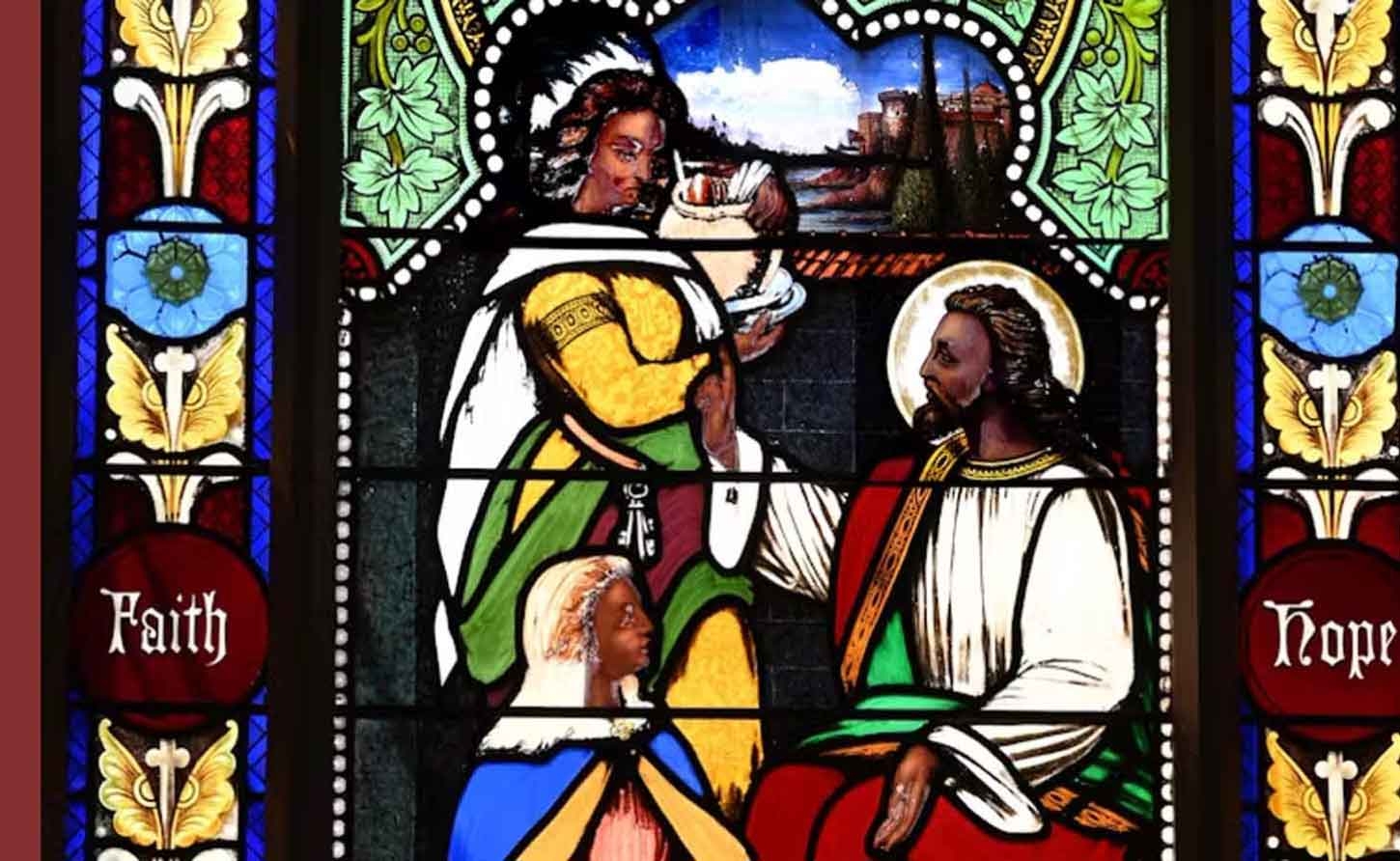
A stained-glass window, donated in 1877 to a church in Rhode Island, shows Jesus as a dark-skinned man. Most Western depictions portrayed him as a European, with light skin and sometimes even with blue eyes. A Black Jesus at this time was unknown.
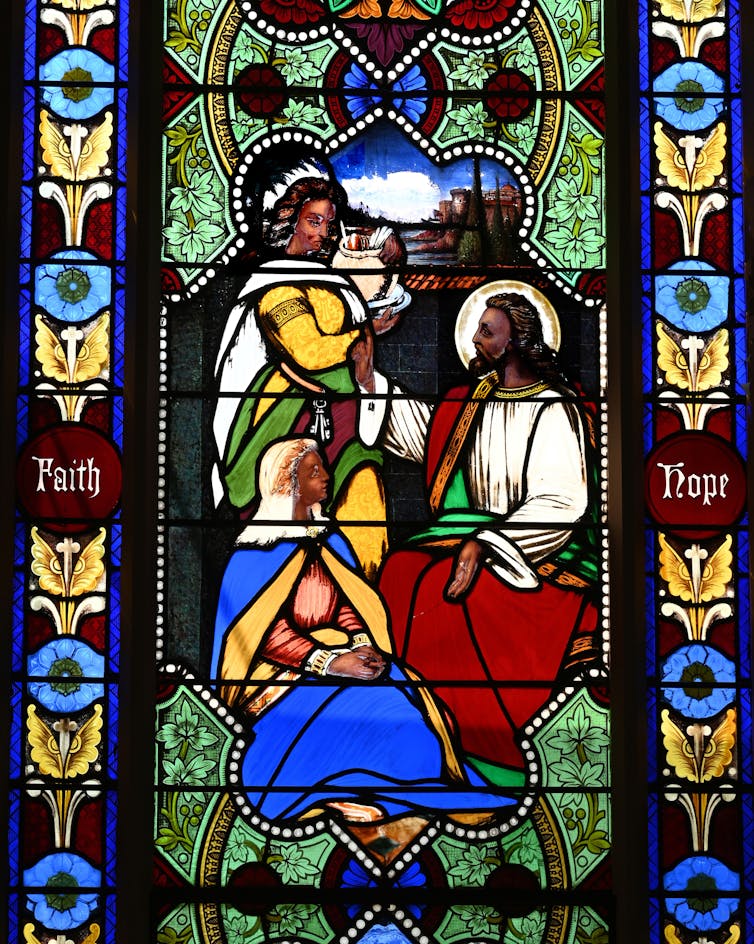
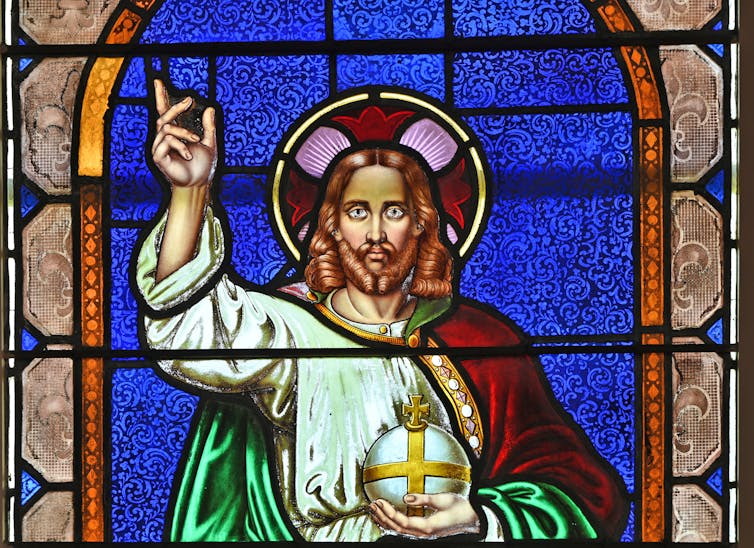
The Black Jesus window is different – instead of depicting a singular saintly figure, the 12-by-5-foot window tells a full narrative. It depicts scenes of Jesus speaking with women who also have dark brown skin.
As a scholar of images, I believe that the window speaks about equality, not only of race, but of gender, class and ethnicity.
The scenes were based on two Bibles published in the 1860s, illustrated by the German artist Julius Schnorr von Carolsfeld and the French artist Gustave Doré. Von Carolsfeld provided the model for the first scene, when Jesus visits his friends for dinner – two sisters named Mary and Martha and their brother Lazarus.
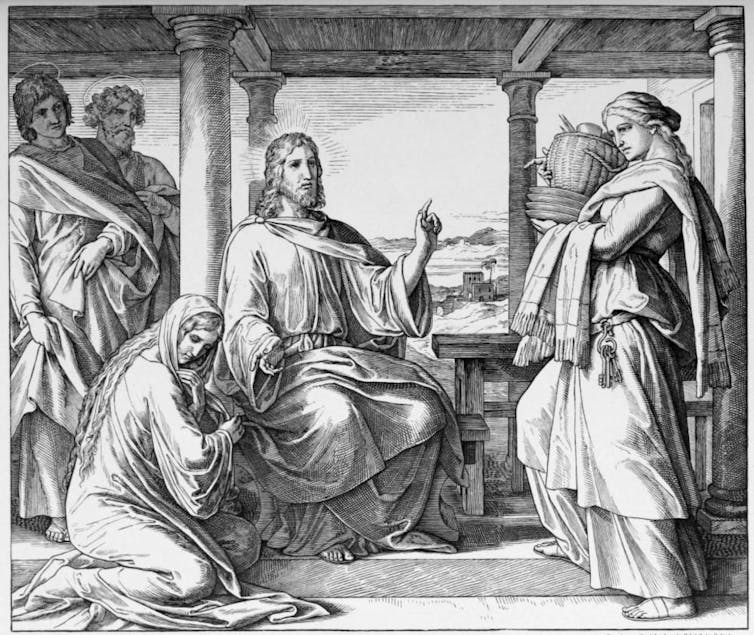
In the Gospel of Luke, Christ criticizes Martha for being preoccupied with preparation for receiving guests and praises Mary, sitting immobile at his feet so that she can listen. In the window, however, service and contemplation are equally praised. Christ looks directly at Martha standing and Mary sitting. Like the medieval monastic model of “ora et labora,” or prayer and labor – both seen as complementary elements of society.
In a second image on the same window, Christ speaks with a Samaritan woman alone, which, during that time, men were not supposed to do. Additionally, the Samaritans, an ethnic group living in the Middle East, were viewed at the time by the Jews as different and inferior. Christ, however, asks her for water and tells her that he is Son of God, the Messiah.
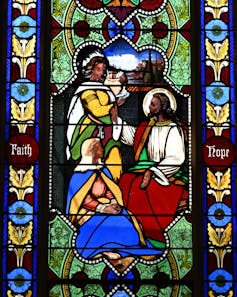
I, along with other conservators who have examined the window, found the dark paint used for the skin color authentic and not a result of any deterioration, which can have a darkening effect on paintings over time. This color skin, as far as art historians know, was not used in any other window before this time.
The donor, a woman named Mary P. Carr, honored the memory of two women whom she named in the inscription. One, Ruth Bourne DeWolf, had married John DeWolf, a descendant of the Bristol family that had built its great fortune through transport of enslaved Africans. She and Hannah Gibbs, the other woman named, gave money to the American Colonization Society that supported the passage of free Africans to Africa.
Carr’s commission dates to the same year of the U.S. Congress’ Compromise of 1877, which effectively ended post-Civil War Reconstruction. I argue that this was not a coincidence but that Carr intended the window as a protest against the segregation laws being enacted that led to the era of “Jim Crow” in Southern states. She also wanted to seek more respect for women’s work.
The window not only depicts women at work but shows Jesus directly talking respectfully to these women as they are working.
The back story to this comes from The Rhode Island monthly in a piece written by Lauren Clem who wrote that In 2014, a couple embarked on an extraordinary journey to transform an abandoned 19th-century church into their dream home. Little did they know that hidden within the walls of this historic Greek Revival structure lay a remarkable secret waiting to be unveiled.
As they meticulously renovated the former St. Mark's Church in Warren, Rhode Island, Hadley Arnold made a discovery that would challenge conventional perceptions of religious iconography. Nestled high in the church's frame was a stained-glass window unlike any other – a vivid depiction of Jesus and three biblical women, all portrayed with unmistakably diverse skin tones.
This 1877 masterpiece by artist Henry Sharp wasn't just aesthetically striking; it was a bold statement of inclusivity crafted nearly 150 years ago. The window's dedication added another layer of intrigue – it honored two women from the infamous slave-trading DeWolf family, their true feelings about their family's dark legacy lost to time.
Hadley's find sparked a community-wide conversation about representation in religious art and the power of seeing oneself reflected in sacred spaces. The window became a catalyst for dialogue, drawing emotional responses from those who had long felt excluded from traditional Western religious imagery.
Now, Hadley is on a mission to preserve this unique piece of history and unravel its mysteries. She envisions the window finding a new home in a museum or academic institution, where its message of diversity and inclusion can continue to inspire and educate future generations.
This unexpected treasure, hidden for decades within the walls of an old church, serves as a poignant reminder that sometimes, the most profound revelations about our shared humanity can be found in the most unexpected places.
Virginia Raguin, Distinguished Professor of Humanities Emerita, Visual Arts, College of the Holy Cross . This article is republished from The Conversation under a Creative Commons license. Read the original article.

 Ar
Ar  En
En